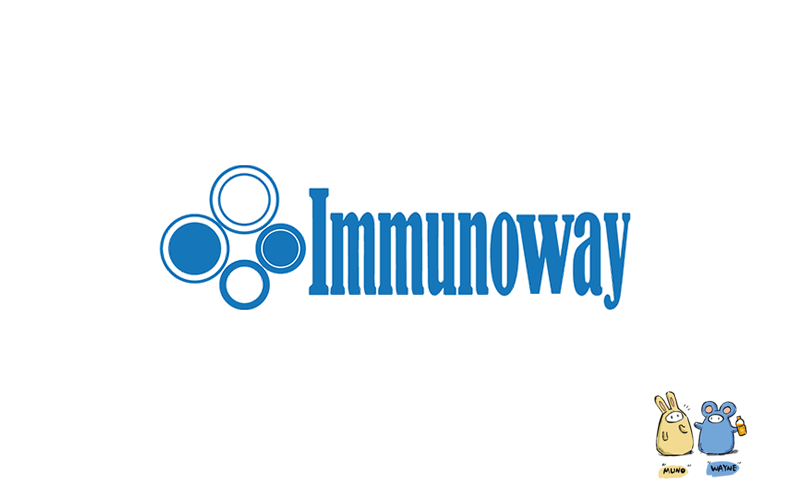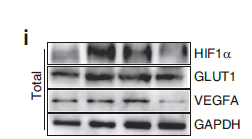
主要信息
Target
TTF-1
Host Species
Rabbit
Reactivity
Human, Mouse, Rat,
Applications
IHC
Conjugate/Modification
Unmodified

详细信息
推荐稀释比
Ready to use for IHC
组成
The prediluted ready-to-use antibody is diluted in phosphate buffer saline containing stabilizing protein and 0.05% Proclin 300
特异性
This antibody detects endogenous levels of TTF-1
纯化工艺
Recombinant Expression and Affinity purified
储存
2°C to 8°C/1 year
修饰
Unmodified
克隆性
Monoclonal
克隆号
PT0101R
同种型
IgG1,Kappa
相关产品
抗原&靶点信息
免疫原:
Synthesized peptide derived from human TTF1 AA range:50-150
展开内容
特异性:
This antibody detects endogenous levels of TTF-1
展开内容
基因名称:
NKX2-1
展开内容
蛋白名称:
AV026640;BCH;Benign chorea;BHC;Homeobox protein NK 2 homolog A;Homeobox protein NK-2 homolog A;Homeobox protein Nkx 2.1;Homeobox protein Nkx-2.1;Homeobox protein Nkx2.1;NK 2;NK 2 homolog A;NK2;NK2 homeobox 1;NK2, drosophila, homolog of, A;NK2.1, mouse, homolog of;Nkx 2 1;NKX 2.1;NKX 2A;NKX2 1;Nkx2-1;NKX2.1;NKX21_HUMAN;NKX2A;T EBP;T/EBP;TEBP;Thyroid nuclear factor 1;Thyroid nuclear factor;Thyroid specific enhancer binding protein;Thyroid transcription factor 1;Tin man;Tinman;TITF 1;TITF1;TTF 1;TTF-1;TTF1
展开内容
别名:
AV026640 ;
BCH ;
Benign chorea ;
BHC ;
Homeobox protein NK 2 homolog A ;
Homeobox protein NK-2 homolog A ;
Homeobox protein Nkx 2.1 ;
Homeobox protein Nkx-2.1 ;
Homeobox protein Nkx2.1 ;
NK 2 ;
NK 2 homolog A ;
NK2 ;
NK2 homeobox 1 ;
NK2, drosophila, homolog of, A ;
NK2.1, Mouse, homolog of ;
Nkx 2 1 ;
NKX 2.1 ;
NKX 2A ;
NKX2 1 ;
Nkx2-1 ;
NKX2.1 ;
NKX21_HUMAN ;
NKX2A ;
T EBP ;
T/EBP ;
TEBP ;
Thyroid nuclear factor 1 ;
Thyroid nuclear factor ;
Thyroid specific enhancer binding protein ;
Thyroid transcription factor 1 ;
Tin man ;
Tinman ;
TITF 1 ;
TITF1 ;
TTF 1 ;
TTF-1 ;
TTF1
BCH ;
Benign chorea ;
BHC ;
Homeobox protein NK 2 homolog A ;
Homeobox protein NK-2 homolog A ;
Homeobox protein Nkx 2.1 ;
Homeobox protein Nkx-2.1 ;
Homeobox protein Nkx2.1 ;
NK 2 ;
NK 2 homolog A ;
NK2 ;
NK2 homeobox 1 ;
NK2, drosophila, homolog of, A ;
NK2.1, Mouse, homolog of ;
Nkx 2 1 ;
NKX 2.1 ;
NKX 2A ;
NKX2 1 ;
Nkx2-1 ;
NKX2.1 ;
NKX21_HUMAN ;
NKX2A ;
T EBP ;
T/EBP ;
TEBP ;
Thyroid nuclear factor 1 ;
Thyroid nuclear factor ;
Thyroid specific enhancer binding protein ;
Thyroid transcription factor 1 ;
Tin man ;
Tinman ;
TITF 1 ;
TITF1 ;
TTF 1 ;
TTF-1 ;
TTF1
展开内容
背景:
This gene encodes a protein initially identified as a thyroid-specific transcription factor. The encoded protein binds to the thyroglobulin promoter and regulates the expression of thyroid-specific genes but has also been shown to regulate the expression of genes involved in morphogenesis. Mutations and deletions in this gene are associated with benign hereditary chorea, choreoathetosis, congenital hypothyroidism, and neonatal respiratory distress, and may be associated with thyroid cancer. Multiple transcript variants encoding different isoforms have been found for this gene. This gene shares the symbol/alias 'TTF1' with another gene, transcription termination factor 1, which plays a role in ribosomal gene transcription. [provided by RefSeq, Feb 2014],
展开内容
功能:
Disease:Defects in NKX2-1 are the cause of benign hereditary chorea (BHC) [MIM:118700]; also known as hereditary chorea without dementia. BHC is an autosomal dominant movement disorder. The early onset of symptoms (usully before the age of 5) and the observation that in some BHC families the symptoms tend to decrease in adulthood suggests that the disorder results from a developmental disturbance of the brain. BHC is non-progressive and patients have normal or slightly below normal intelligence. There is considerable inter- and intrafamilial variability, including dysarthria, axial distonia and gait disturbances.,Disease:Defects in NKX2-1 are the cause of choreoathetosis, hypothyroidism, and neonatal respiratory distress (CHNRD) [MIM:610978]. This syndrome include neurological, thyroid, and respiratory problems.,Function:Transcription factor that binds and activates the promoter of thyroid specific genes such as thyroglobulin, thyroperoxidase, and thyrotropin receptor. Crucial in the maintenance of the thyroid differentiation phenotype. May play a role in lung development and surfactant homeostasis.,PTM:Phosphorylated on serine residues.,similarity:Belongs to the NK-2 homeobox family.,similarity:Contains 1 homeobox DNA-binding domain.,tissue specificity:Thyroid and lung.,
展开内容
细胞定位:
Nuclear
展开内容
组织表达:
Thyroid/ Lung
展开内容
文献引用({{totalcount}})
Recently Viewed Products
Clear allToggle night Mode
{{pinfoXq.title || ''}}
Catalog: {{pinfoXq.catalog || ''}}
Filter:
All
{{item.name}}
{{pinfo.title}}
-{{pinfo.catalog}}
主要信息
Target
{{pinfo.target}}
Reactivity
{{pinfo.react}}
Applications
{{pinfo.applicat}}
Conjugate/Modification
{{pinfo.coupling}}/{{pinfo.modific}}
MW (kDa)
{{pinfo.mwcalc}}
Host Species
{{pinfo.hostspec}}
Isotype
{{pinfo.isotype}}
产品 {{index}}/{{pcount}}
上一个产品
下一个产品
{{pvTitle}}
滚轮缩放图片
{{pvDescr}}























